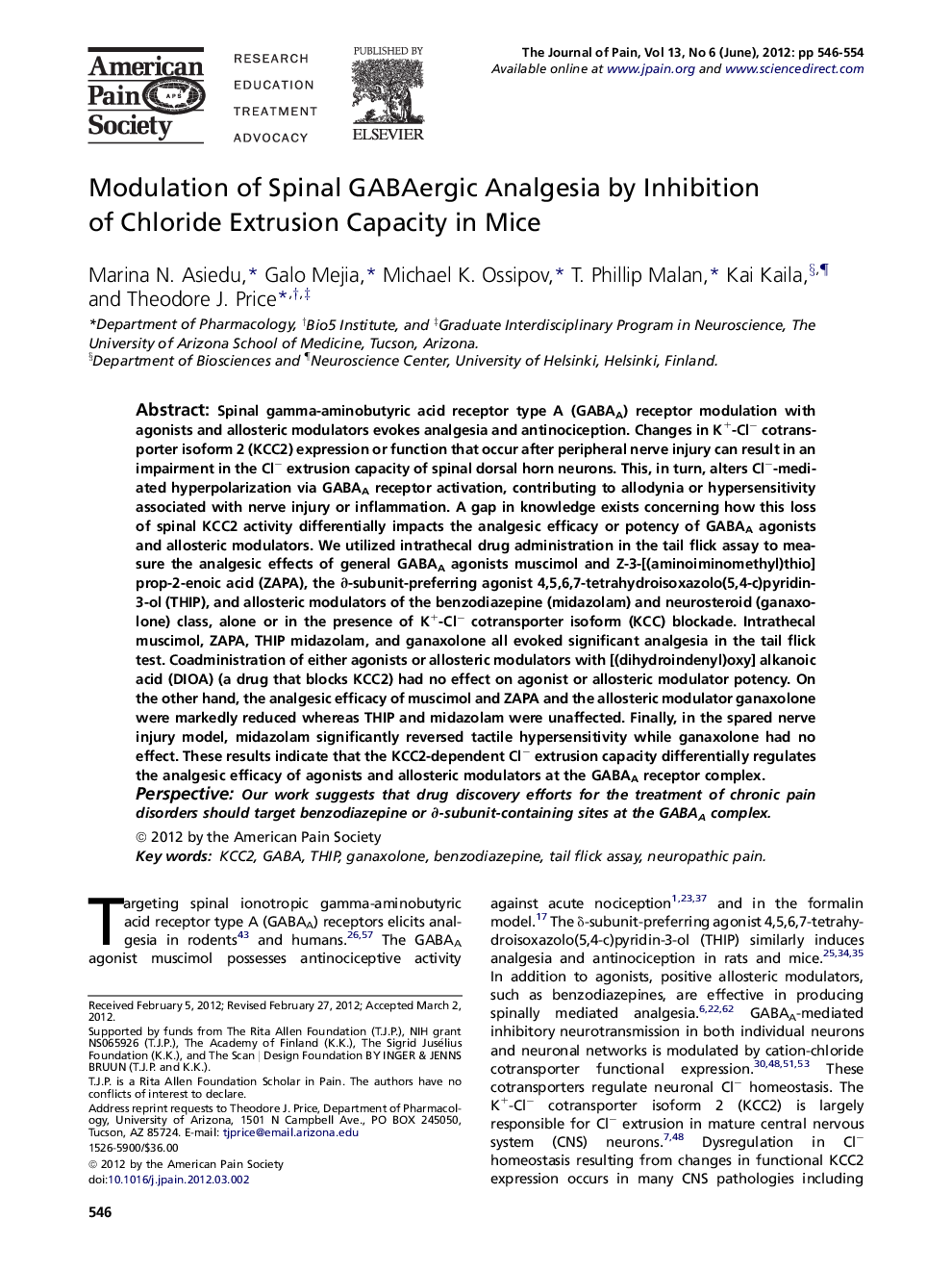| Article ID | Journal | Published Year | Pages | File Type |
|---|---|---|---|---|
| 2728853 | The Journal of Pain | 2012 | 9 Pages |
Spinal gamma-aminobutyric acid receptor type A (GABAA) receptor modulation with agonists and allosteric modulators evokes analgesia and antinociception. Changes in K+-Cl− cotransporter isoform 2 (KCC2) expression or function that occur after peripheral nerve injury can result in an impairment in the Cl− extrusion capacity of spinal dorsal horn neurons. This, in turn, alters Cl−-mediated hyperpolarization via GABAA receptor activation, contributing to allodynia or hypersensitivity associated with nerve injury or inflammation. A gap in knowledge exists concerning how this loss of spinal KCC2 activity differentially impacts the analgesic efficacy or potency of GABAA agonists and allosteric modulators. We utilized intrathecal drug administration in the tail flick assay to measure the analgesic effects of general GABAA agonists muscimol and Z-3-[(aminoiminomethyl)thio]prop-2-enoic acid (ZAPA), the ∂-subunit-preferring agonist 4,5,6,7-tetrahydroisoxazolo(5,4-c)pyridin-3-ol (THIP), and allosteric modulators of the benzodiazepine (midazolam) and neurosteroid (ganaxolone) class, alone or in the presence of K+-Cl− cotransporter isoform (KCC) blockade. Intrathecal muscimol, ZAPA, THIP midazolam, and ganaxolone all evoked significant analgesia in the tail flick test. Coadministration of either agonists or allosteric modulators with [(dihydroindenyl)oxy] alkanoic acid (DIOA) (a drug that blocks KCC2) had no effect on agonist or allosteric modulator potency. On the other hand, the analgesic efficacy of muscimol and ZAPA and the allosteric modulator ganaxolone were markedly reduced whereas THIP and midazolam were unaffected. Finally, in the spared nerve injury model, midazolam significantly reversed tactile hypersensitivity while ganaxolone had no effect. These results indicate that the KCC2-dependent Cl− extrusion capacity differentially regulates the analgesic efficacy of agonists and allosteric modulators at the GABAA receptor complex.PerspectiveOur work suggests that drug discovery efforts for the treatment of chronic pain disorders should target benzodiazepine or ∂-subunit-containing sites at the GABAA complex.
